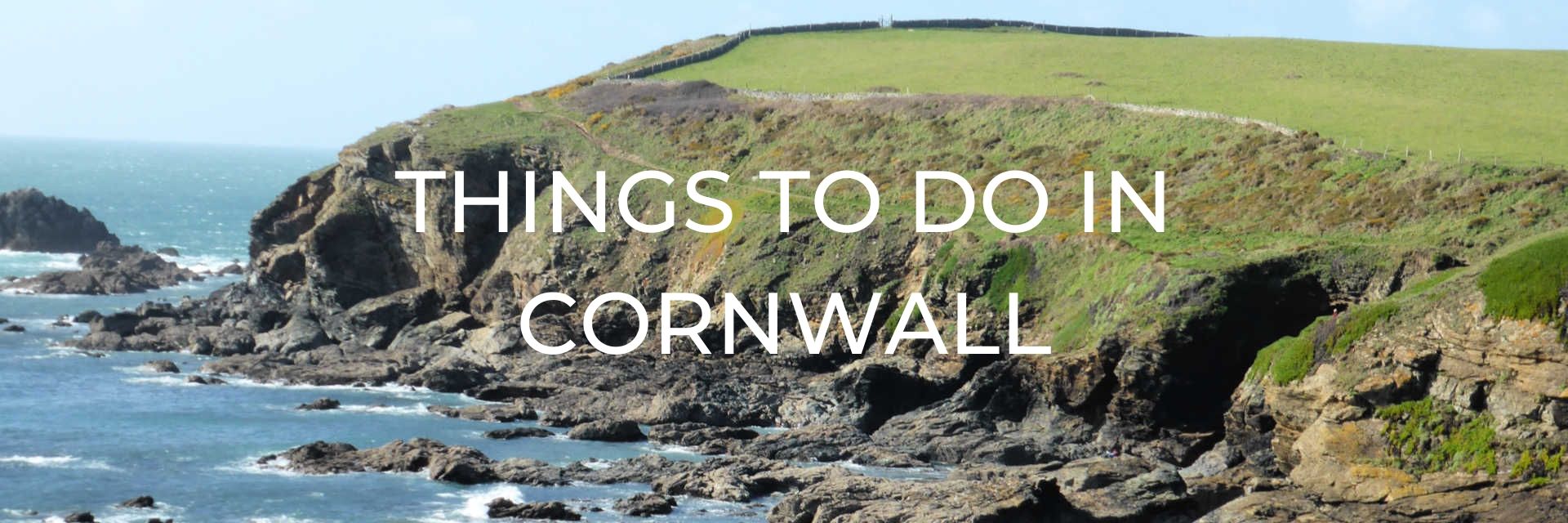
The ancient Celtic kingdom of Cornwall (or Kernow in Cornish) is as far south and west as you can go in England. Settled for thousands of years, there are ancient monuments to explore and the remnants of what was once the world’s biggest tin mining area still dot the landscape. The rugged coastline and stunning beaches offer dramatic views as you travel the peninsula. Enjoy some of the best things Cornwall has to offer.
A map showing the location of everything can be found at the end of the post.
Want to save this for later? Click the Pinterest button on the left for a pinnable image!
This post may contain affiliate links. Please read our full disclosure policy here.
GWENNAP PIT
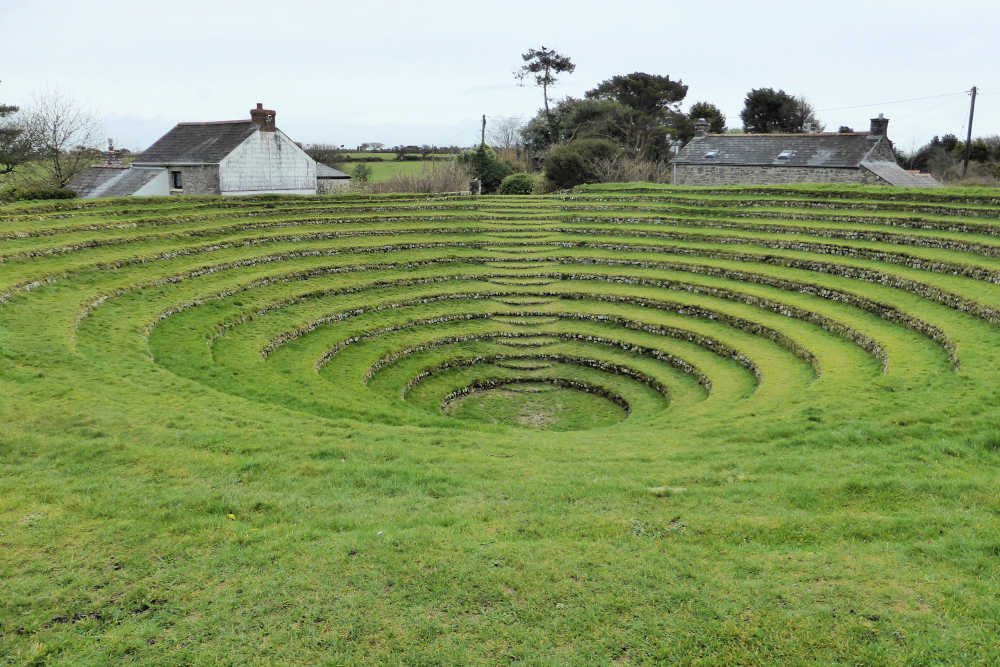
Gwennap Pit is a circular amphitheatre in the small village of Gwennap which is still used for religious services, as well as other events. It is commonly believed that the pit formed due to collapsed mine workings. Today, it is landscaped and can hold 1,500 people in its 12 tiered rings.
It doesn’t take long to visit and is a unique and interesting place.
Read Reviews of Gwennap Pit | 8-9 Saint Clement Street, Truro TR1 1DT
KENNALL VALE GUNPOWDER FACTORY
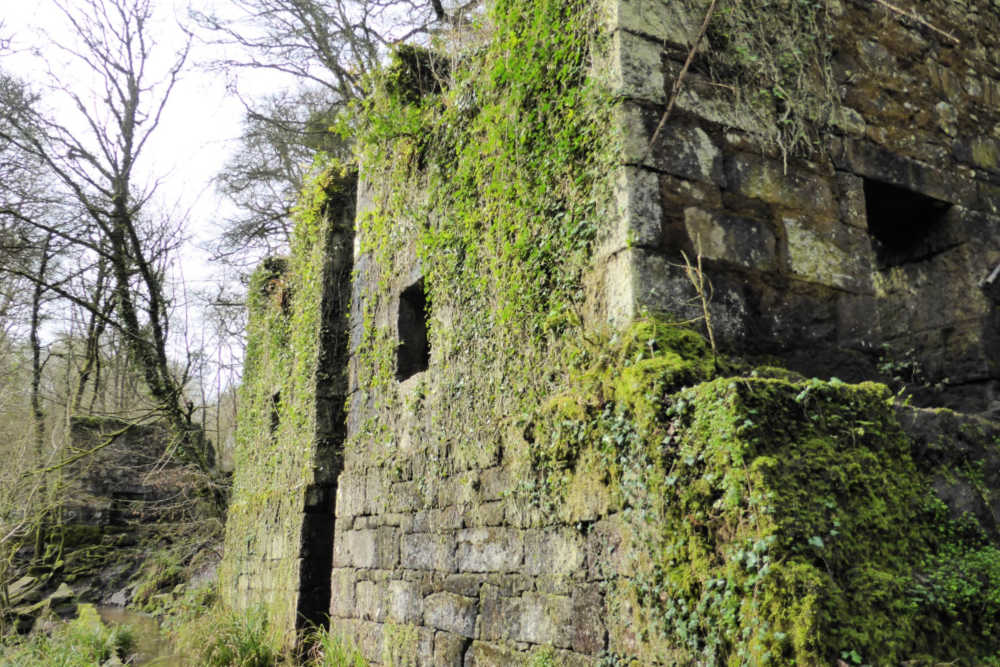
The Kennall Vale Nature Reserve is the former site of a gunpowder factory that is now a nature reserve. The first part of the reserve is fairly flat and forms a gentle stroll through pleasant woods where many people walk their dogs. The first building you come to is the remains of the Packing House, but there isn’t much to see here now, just the walls of the building and no remaining clues as to what it was for. Continuing on the same path you arrive at the quarry which has long since flooded and is now a peaceful oasis. Granite from here was used to prepare memorials for the First World War and in the stonework of the London Embankment.
Just beyond the quarry is the blacksmith, this was kept some distance away from the other buildings for good reason – blacksmiths generate sparks and use fires! From here you can continue on to the Corning House with its shaft down to the underground wheel chamber. Backtracking a little, you can cut across the river and up to the more perilous part of the reserve. At the entrance, they do warn you that the path here is more difficult than the rest. Up here, it’s a bit more of a clamber and there is running water to navigate, but it’s worth it. This is where the Incorporating Mills are and we thought these were the most interesting parts of the gunpowder factory.
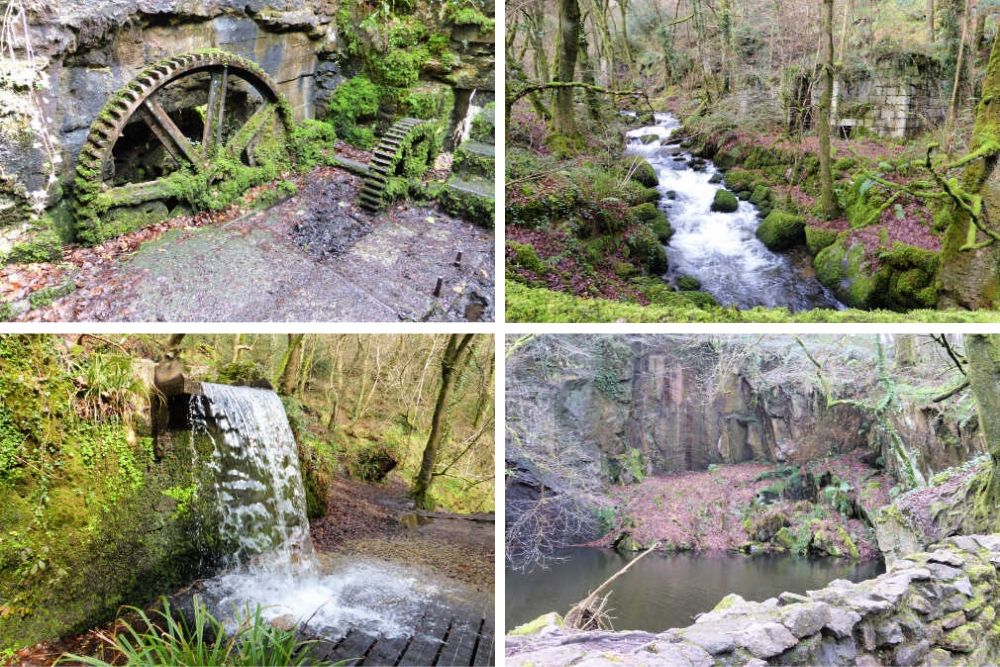
Each pair of mills was powered by a waterwheel between them and you can still clearly see the path the water would have taken to power the wheel. Inside each house (some are more accessible than others) the remains of the drive wheels can be seen which makes it easy to envisage how the process worked to take the energy from the rushing water to grind the ingredients for gunpowder.
The ruins of the Change House and Mixing House mark the end of your exploration. These are just the shells of buildings, similar to the blacksmiths at the start. From here you can return to the entrance via the stone bridge across the River Kennall and head back down the hill to your car.
TOP TIP: Please park in the village; don’t park on Cot Hill as it obstructs traffic. From the village, it’s a gentle walk Cot Hill to the entrance where the path goes in front of a cottage and you’ll see the gate to enter the reserve. Just inside is a map showing the main features of the remains of the gunpowder works.
Read Reviews of Kennall Value | Cot Hill, Ponsanooth, Truro TR3 7HJ
CORNISH SEAL SANCTUARY
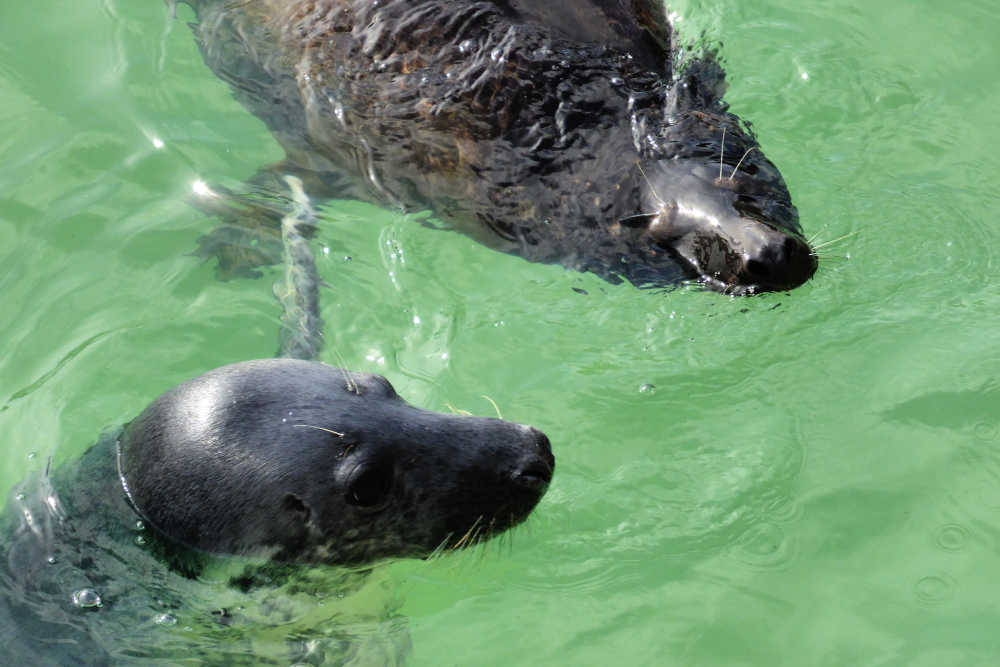
The Cornish Seal Sanctuary in Gweek is a working facility looking after seals that have been rescued, and hopefully rehabilitating them so they can return to the wild. Whilst centred around seals, you will also get to see sea lions, penguins and otters as you explore the site.
At the convalescence pool, you can see the seals being fed and notice the keepers standing well back from the edge of the fence overlooking the pool and throwing the fish into the pools. Rather than just delivering the fish more easily, they do this so that the seals don’t see where the fish come from. If they did, they might start to associate humans with food and approach them in the wild instead of hunting for their own meal, so it’s all part of the rehabilitation process.
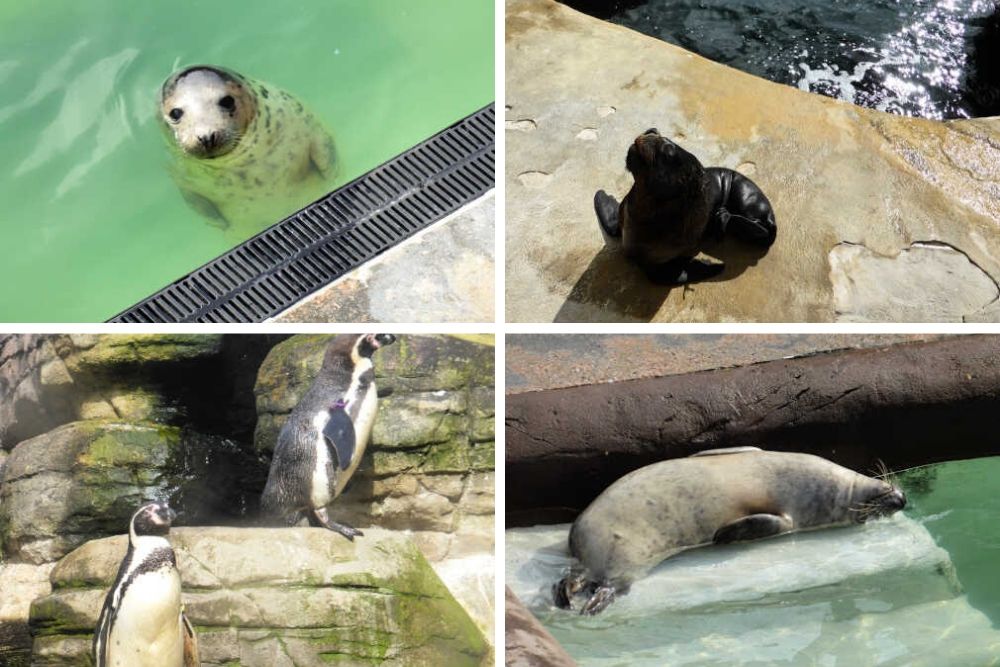
Whilst the intention is to return the animals to the wild, some of them have been at the centre for quite some time and it seems will never return to the wild. It’s an interesting place to visit and your entrance fee helps ensure they can continue their work. If you are not a big fan of zoos where animals are kept in captivity purely for us to see them, here you can see animals as they are helped to return, where possible, to the sea to live out the rest of their lives naturally.
Read Reviews of Cornish Seal Sanctuary | Gweek, TR126UG
LIZARD POINT
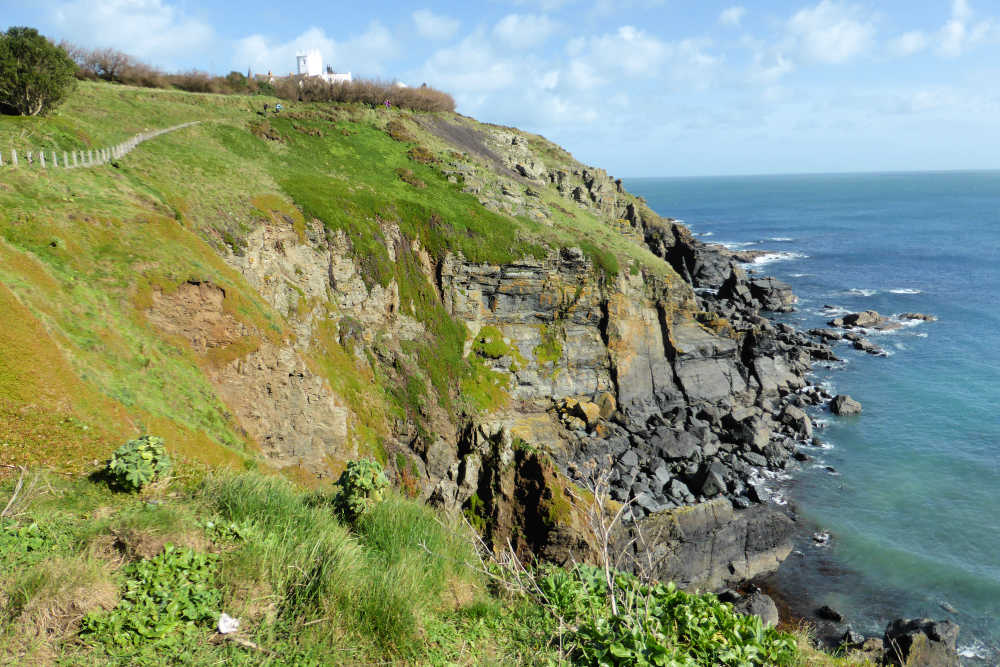
Lizard Point is a peninsula within the peninsula of Cornwall and contains the southernmost point in the British mainland. As well as offering a rugged and beautiful coastline, it is also where modern communications began – something you can learn more about at the Telegraph Museum (see below). On the way out to the point, you pass the ‘Most Southerly House‘ and the lighthouse before starting to enjoy the beautiful views and breathe in the sea air.
Read Reviews for Lizard Point | S W Coast Path, Lizard, Helston TR12 7NT
KYNANCE COVE
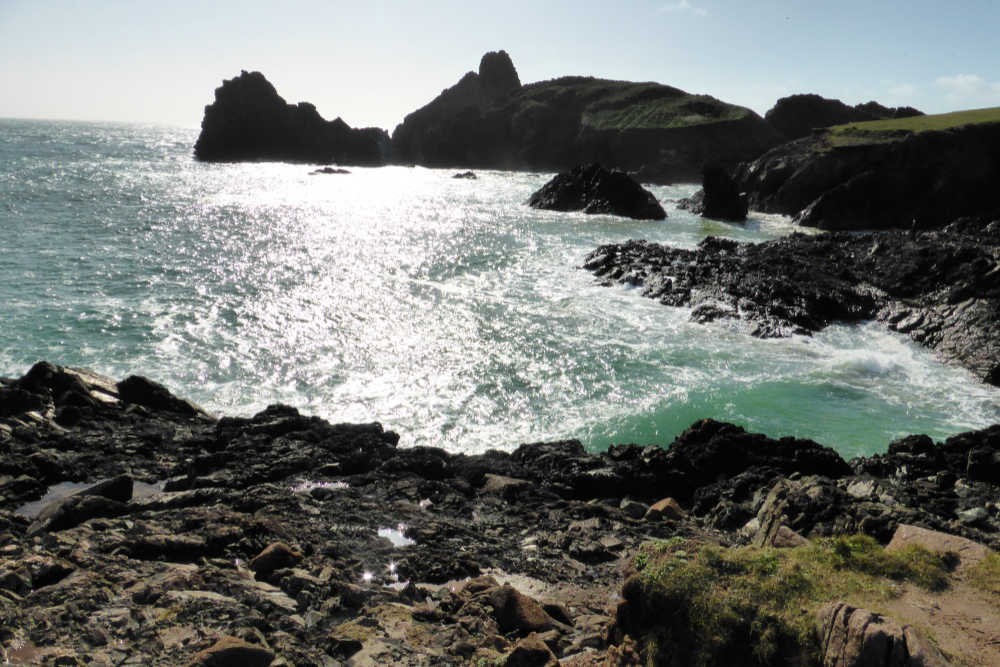
Kynance Cove is a beautiful cove managed by the National Trust. Whether you head to the beach cafe or just venture down to admire the views as the waves crash ashore, it’s a beautifully peaceful place. Perhaps the perfect place for a picnic? If you are there as the tide comes in, you will no doubt see people trying to avoid waves as they make their way to the café across the rapidly disappearing beach.
TOP TIP: Be aware there are two routes from the car park so if you want to visit the beach café and the tide is in, make sure you take the rightmost route. The left route, whilst more direct, means crossing the beach to get to the café, so when the tide is in that would be perilous, to say the least!
Read Reviews for Kynance Cove | Landewednack, Helston TR12 7PJ
THE MARCONI CENTRE
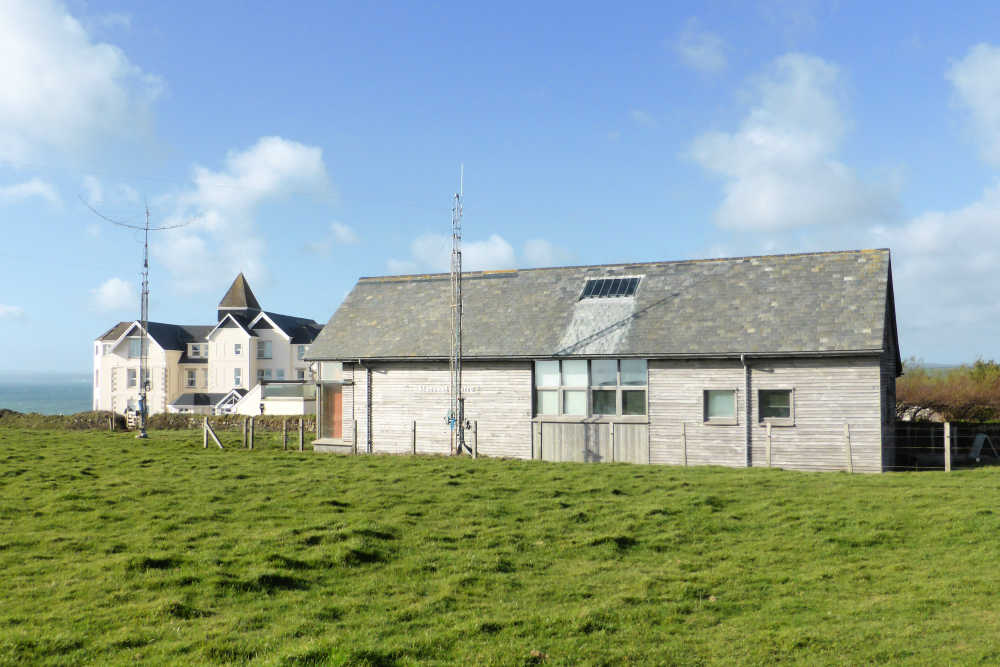
Arguably the birthplace of modern communications – the Marconi Centre stands on the ground that the first-ever transatlantic radio signal was transmitted from. On the 12th December 1901, Guglielmo Marconi, listening on the other side of the Atlantic in St. John’s, Newfoundland, heard the distinctive three clicks of a Morse ‘S’. Whilst there is some scepticism surrounding whether this first test was successful, wireless communication clearly was and this groundbreaking work lead to the wireless connected world we all rely on on a daily basis.
Today, all of the apparatus is long since disappeared and the site is a field with a few blocks of concrete buried in the soil. However, the spot is marked by an obelisk and the museum, for its significance in Cornwall’s role in the story of wireless communication.
The museum is run by local amateur radio enthusiasts so you’ll need to check the opening times as it’s only open when they can spare the time. The small museum’s exhibits include Morse keys that you can play with and the story of this historic site and its impact on the world. One of the volunteers was free to chat with us when we visited and provided much interesting information about some of the exhibits. He also tried to demonstrate how the original apparatus that was used to transmit the signal worked; sadly the demo model was playing up and wouldn’t co-operate for him!
Read Reviews for The Marconi Centre | Poldhu Rd, Mullion, TR12 7JB
ANCIENT MONUMENTS
Cornwall is dotted with ancient monuments from Quoits to Standing Stones and Stone Circles to Burial Chambers. Below are a select few:
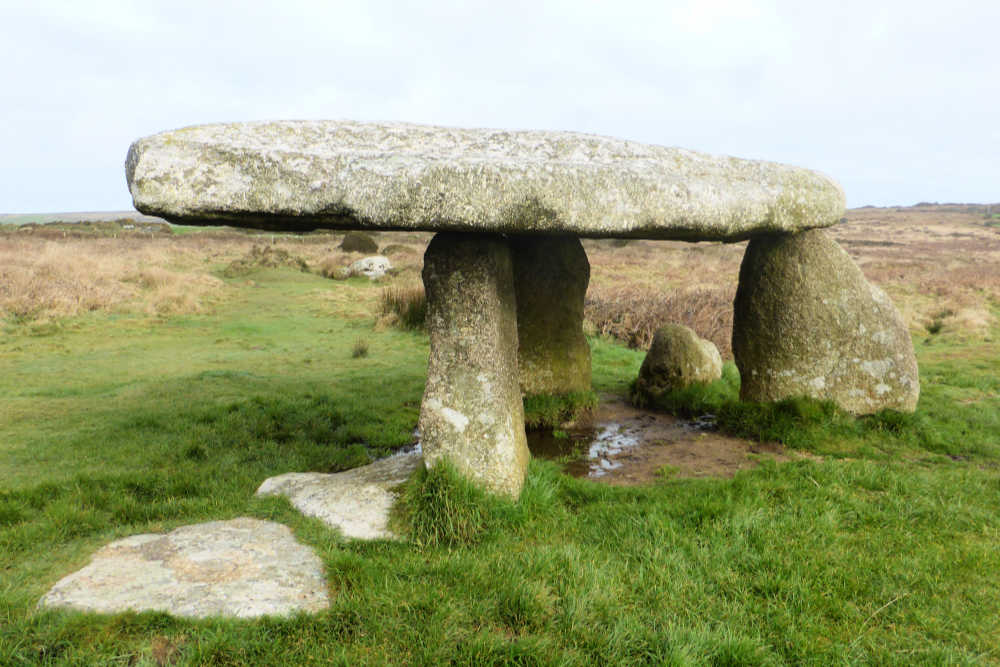
LANYON QUOIT
Whilst Lanyon Quoit is one of the most famous such sites in Cornwall, it is not presented in its original form. The Quoit was knocked down by a storm in 1815 and re-erected nine years later. So while it is definitely representative of a Dolmen or burial chamber, it isn’t as originally built. Even so, it’s an interesting thing to see and wonder how and why our ancestors would lift a 12-tonne lump of stone onto three (originally four) upright stones.
Read Reviews for Lanyon Quoit | Madron, Penzance TR20 8NY
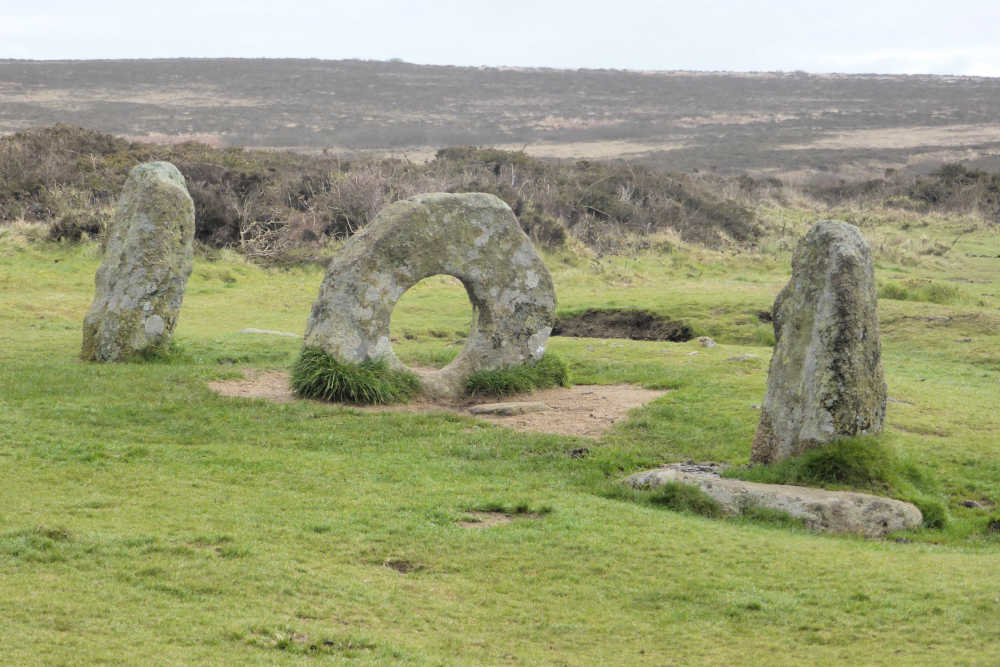
MÊN-AN-TOL
Mên-an-Tol is a very different kind of monument. Dating from the neolithic or early bronze age, it consists of several standing stones, the most interesting of which is a circular stone with a hole in the centre. Whether this stone is man-made or naturally occurring is not known. The stones are a pleasant 0.6-mile hike along a farm track from where you can park. The site is marked by a National Trust plaque and easy to find from the track.
Read Reviews for Mên-an-Tol | Please see the map below for the precise location.
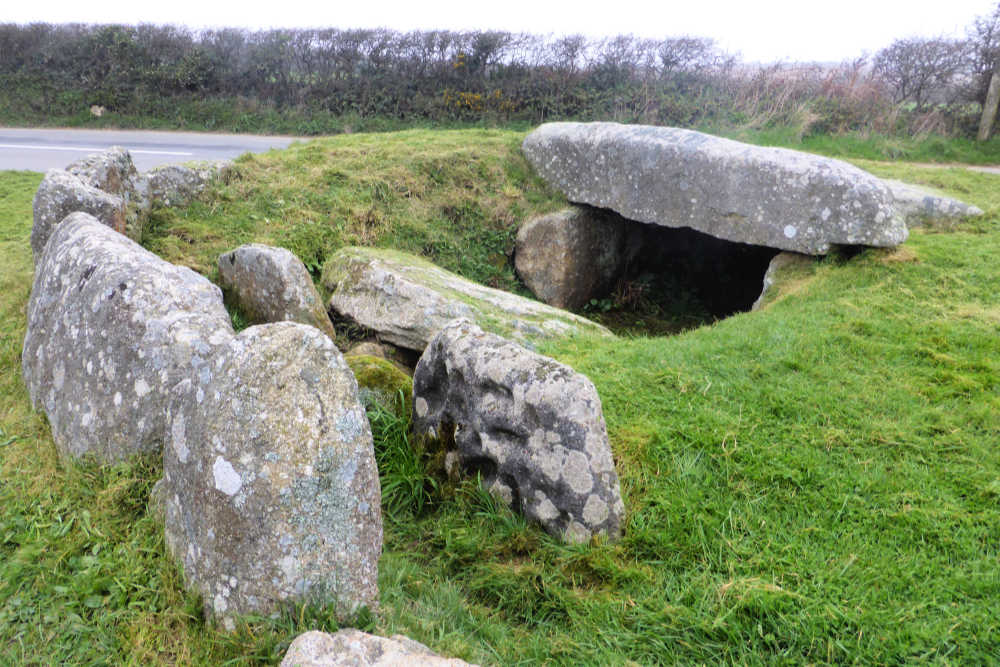
TREGIFFIAN BURIAL CHAMBER
Tregiffian Burial Chamber, now incongruously located right next to the road, is a rare form of entrance grave. Sadly part of the grave was covered by a road in 1846, but what’s left shows the entrance passage and the start of the burial chamber. The top stone is a replica, the original being in the Royal Cornwall Museum in Truro.
Read Reviews for Tregiffian Burial Chamber | Please see the map below for the precise location.
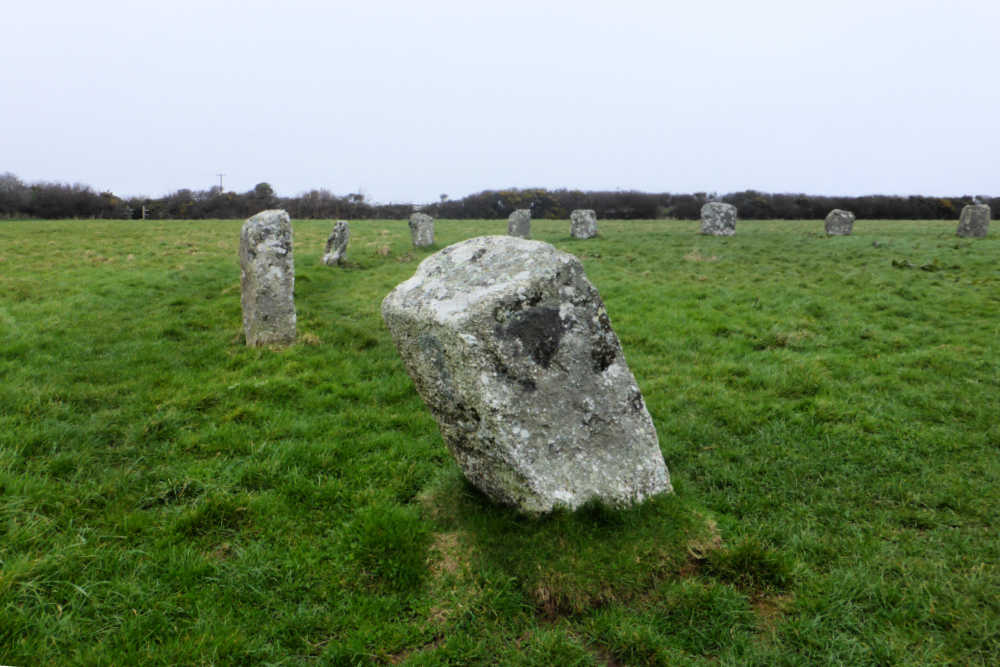
MERRY MAIDENS
A short walk from Tregiffian is the Merry Maidens, a stone circle consisting of nineteen megaliths. The stones are between 1.2 and 1.4 metres in height and form a circle of 24 metres diameter. They are called the Merry Maidens because local legend has it that nineteen maidens were turned to stone as punishment for dancing on a Sunday!
Read Reviews for Merry Maidens | Please see the map below for the precise location.
MINING SITES
Cornwall and neighbouring Devon’s history of mining has led to the area being inscribed on the UNESCO World Heritage List. Remnants of the area’s mining history can be found across the county, below are a few highlights:
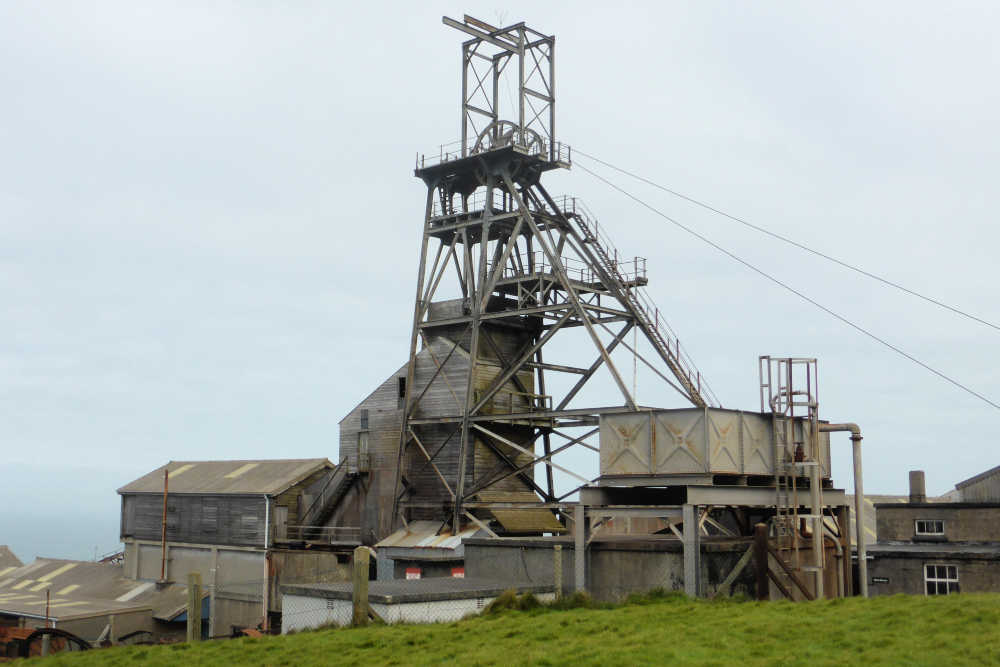
GEEVOR TIN MINE
Geevor Tin Mine is one key example of why this area is a UNESCO World Heritage Site. Today the mine is a tourist attraction, having closed as a working mine in 1990. Within the self-guided part of the site are a small museum with various mining artefacts on display, plant rooms, the engine room and the locker room.
There is also a guided tour which takes you through the plant which mined the tin from the ore, before heading outside and into the 18th Century workings. The tours are given by those who previously worked in the mine so they are a wealth of knowledge and have personal stories to share if asked. This tour is a definite must-do in the Cornwall area and we thoroughly enjoyed it.
Read Reviews for Geevor Tin Mine | Pendeen, Penzance TR19 7EW
READ MORE: Guide to Visiting Cornwall’s Geevor Tin Mine
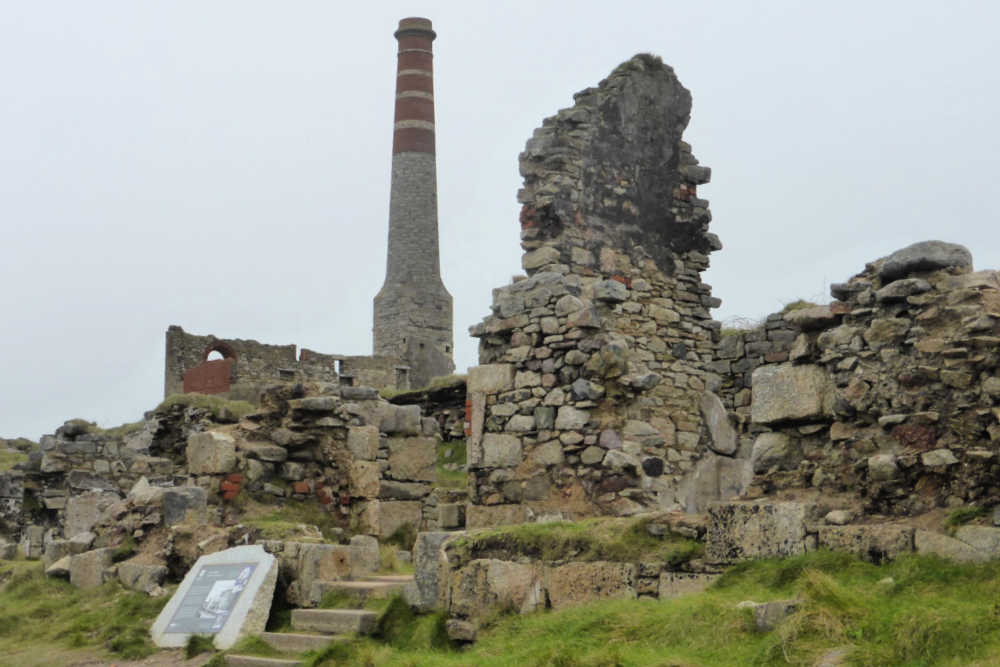
LEVANT MINE AND BEAM ENGINE
Within walking distance of the Geevor Tin Mine is Levant Mine and Beam Engine. This is a restored pumping station; the ruins of which you will see scattered all over Cornwall. Now run by the National Trust, the engine steams on certain days so you can see how they used to work to keep the mines dry.
Read Reviews for Levant Mine and Beam Engine | Levant Rd, Pendeen, Trewellard, Penzance TR19 7SX
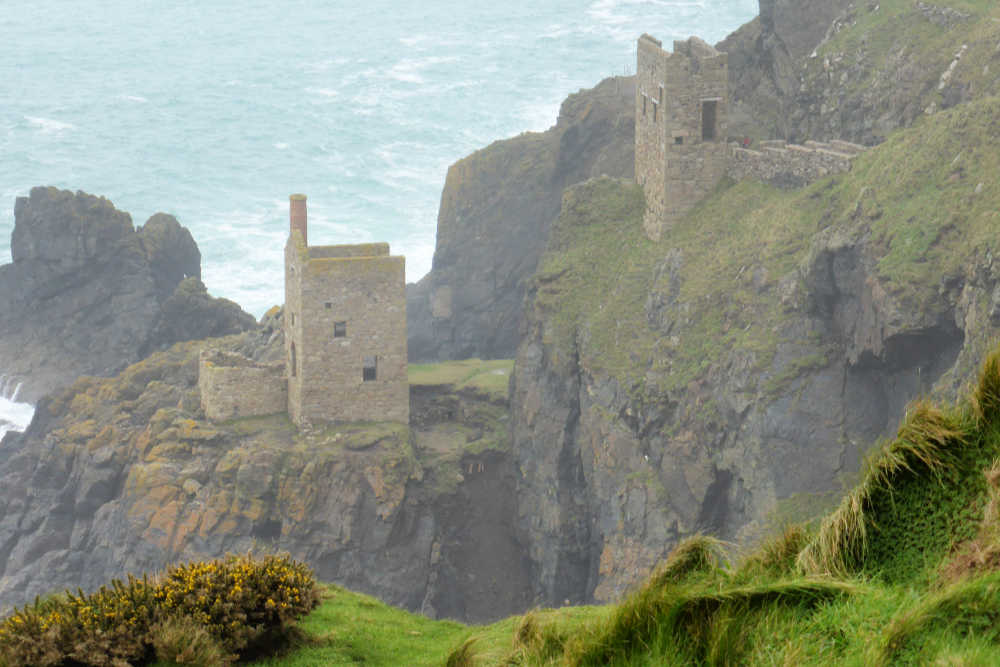
THE COUNT HOUSE, BOTALLACK MINE
A little further along the coast is the Count House from the Botallack Mine. Also maintained by the National Trust, it is also now famous for being “Poldark Country” as scenes from the Poldark TV series were filmed here and elsewhere in Cornwall. One of the most famous views of the Cornish coast can be seen from Botallack, where Crown’s engine houses can be seen clinging dramatically to the cliff edge. As well as the stunning scenery, this area also contains the ruins of an arsenic refinery to explore.
Read Reviews for Botallack Mine | St Just, Penzance TR19 7QQ
LAND’S END
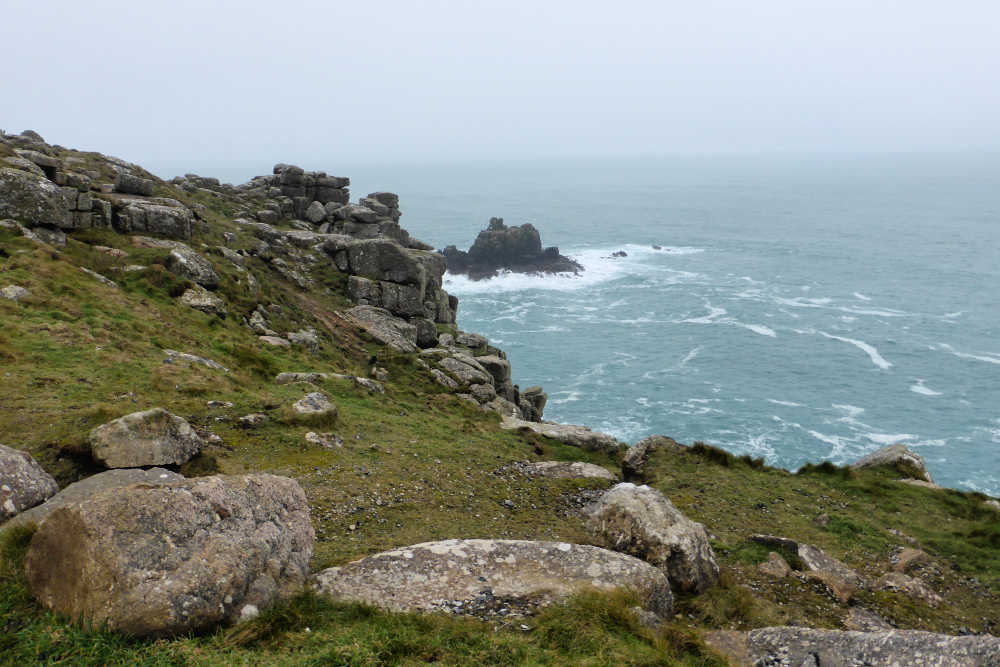
The furthest point west in England and indeed the UK was next. Unlike Lizards Point which is the southernmost point, Land’s End is far more touristy and populated with shops and stalls to sell stuff. It loses the quiet charm of other parts of the coast. Other than to say you’ve been, or if you want to enjoy the other attractions, it could quite easily be.
Read Reviews for Land’s End | Land’s End, Sennen, Penzance TR19 7AA
TELEGRAPH MUSEUM AND PORTHCURNO BEACH
The Porthcurno area was once the most connected place on Earth and is still today an area where undersea cables come ashore. Once telegraphy was established, Britain laid cables to all corners of the Empire, many from this small beach in Cornwall. Messages which took weeks, now took minutes, revolutionising communication.
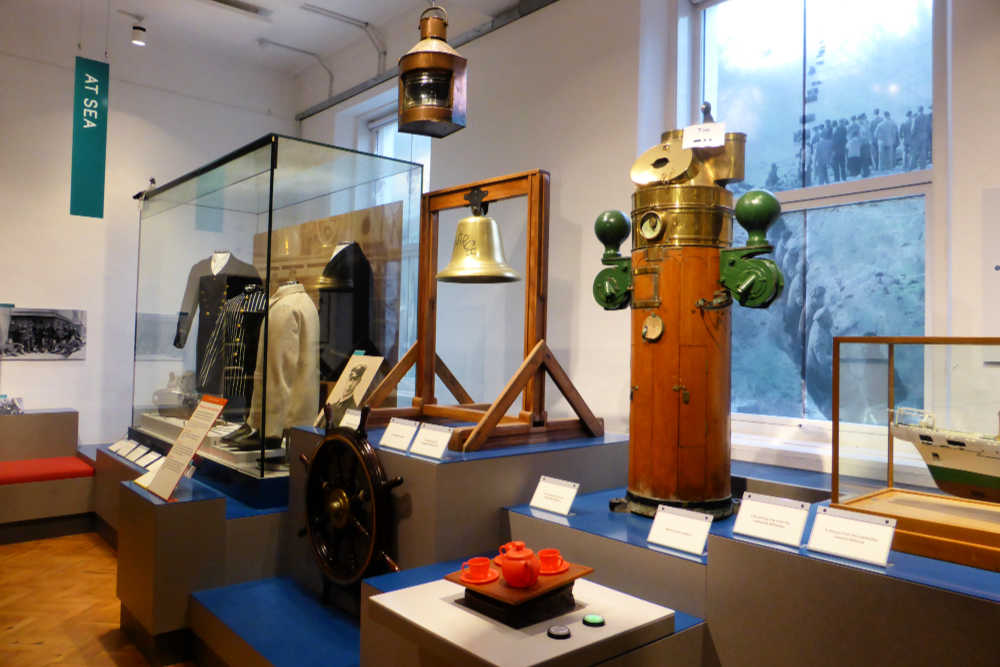
TELEGRAPH MUSEUM
The Telegraph Museum celebrates the part played by the area in this transformation. From the first undersea cable in 1870 that connected Britain to India through the next hundred years until the station closed. The museum shows how telegraphy worked and the impact this new invention had on the world and Cornwall’s role in it through a series of exhibits.
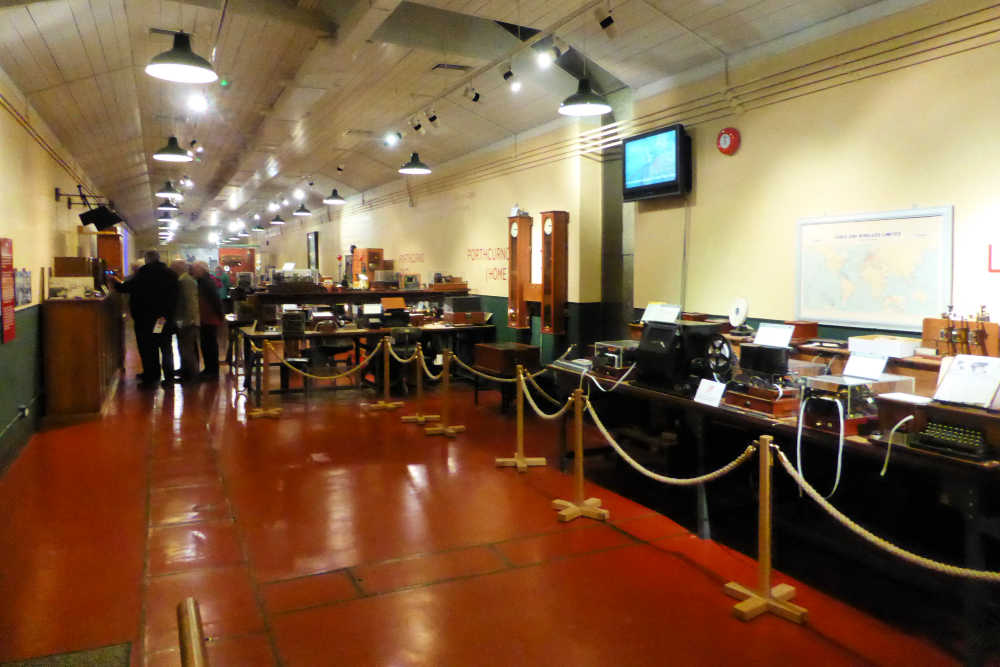
Outside of the museum, you can explore the tunnels that were blasted into the hillside to protect the station during World War II. These tunnels are much smaller in scope than the ones under Dover Castle, but no less important. Within the tunnels now are several exhibits detailing the reason the tunnels were built, together with many old communication machines. At the back of the tunnels, for the fit amongst visitors, you can climb the emergency stairs for views across the bay.
Read Reviews for Telegraph Museum | Eastern House, Porthcurno, Penzance TR19 6JX
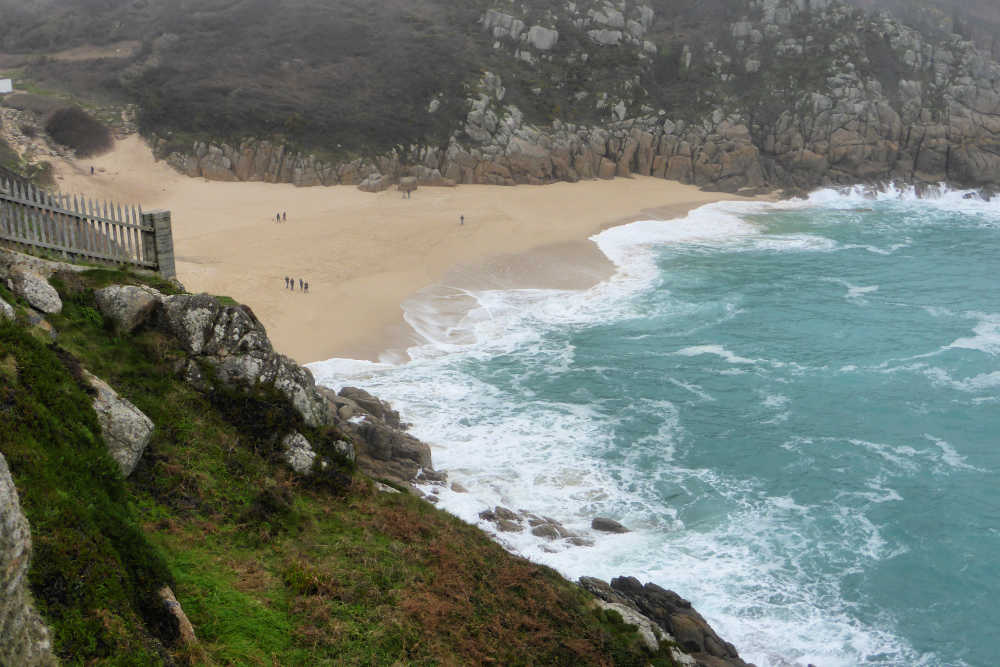
PORTHCURNO BEACH
As you will learn about in the museum Porthcurno Beach is where the cables came ashore. Today a small hut stands at the back of the beach with the pink Telegraph Museum logo on the side. You can’t go or even see inside, unfortunately, but if you are heading down to the beach to enjoy the surf it’s worth a nod to this hut that is still part of the global communication network after all these years.
Read Reviews for Porthcurno Beach | Porthcurno, Cornwall TR19 6JX
MINACK THEATRE
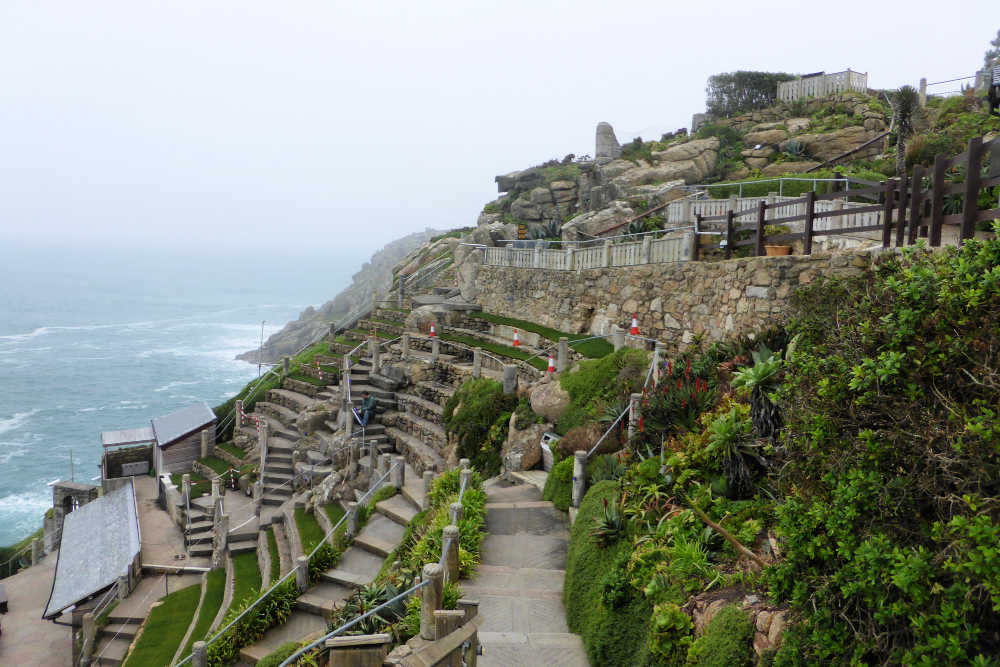
Minack Theatre dates back to the early 1930s when Rowena Cade began transforming the cliffs below her garden into a theatre. To say the setting is stunning is an understatement and we could sadly only imagine what it would be like to watch a play here; maybe one day we will. From the left side of the theatre, you can get a great view of Porthcurno Beach, and from everywhere you get a panoramic view of the Atlantic Ocean. From the first production, “The Tempest”, Minack now hosts drama, musicals and opera every summer.
Read Reviews for Minack Theatre | The Minack Theatre, Porthcurno, Penzance TR19 6JU
Want to save this for later? Click the Pinterest button on the left for a pinnable image!
RESOURCES | PLAN YOUR TRIP TO CORNWALL
To book flights, rental cars, accommodations, and activities for your trip, please check out our recommended travel providers, favourite apps and websites.
These are a few tours we would recommend for your trip to Cornwall
Some of the links in the post above are affiliate links. This means if you click on the link and purchase the item, we will receive an affiliate commission but this does not affect the price to you. Please read our full disclosure policy here.
